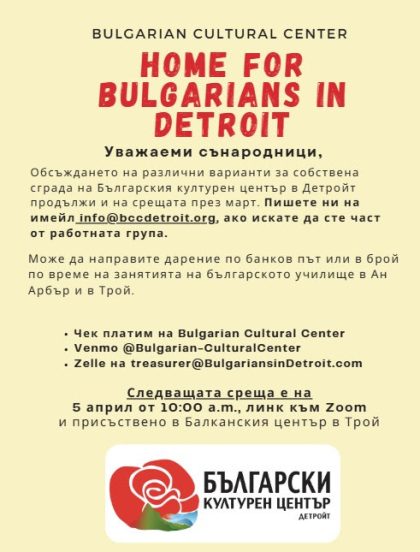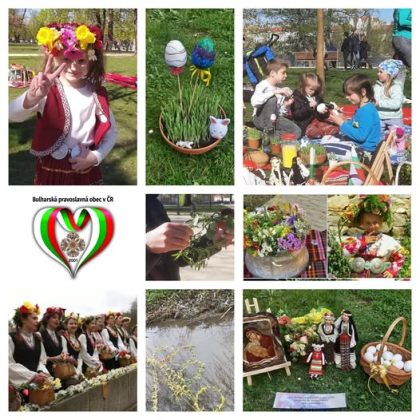Prof. Dr Nikola Charakchiev *
Rodoznanie Bulgarian Genealogy Federation
(Last Update: 25 February 2012)
The intensive development of science worldwide has had a beneficial effect on the progress of genealogy. In this respect, a first attempt will be made at a new classification of the stages in the development of the science of ancestry.
The first stage in the development of genealogy is the legal stage, the second one is the domestic stage, and the third one the genetic stage. The newest stage, which has recently come to life, has been called ‘genealogical synthesis’ after the working name used by the author. The first three stages analyze an individual state (blood and family line), and the fourth stage can be used for the future synthesis of family members. The first and second stages are in conformity with the methods of classical genealogy, whereas the third, fourth and subsequent stages are methodologically determined by genetic genealogy.
Classical genealogy
Classical genealogy establishes and documents the social and legal status of individuals (date and place of birth, marriage, divorce and death, documents of heirship, financial status, education, individual identification number, preserved family memory, social achievements of individual family members, etc.) descending from a common ancestor. Some sources of historical information for classical genealogy contain data both on the legal and the domestic stage. This is most frequent in genealogies from the distant past. According to L’Histoire et ses méthodes. Encyclopedie de la pléiade. Paris, 1961 and Durye, P. La Généalogie. Paris, 1985, the Bible and Jesus Christ’s lineage in the New Testament and the Gospel of Matthew of the first century can be regarded as the oldest genealogical document. There are quite a few dynastic genealogies, such as manuscripts and old printed books, in Mediaeval Western Europe. One of the oldest genealogical descriptions is Jean Herold’s book Généalogies figurées de la Maison royale de France et d’autres maisons illustres. Bâle, 1556.
Classical genealogy in Bulgaria is used to create a person’s family tree starting from the present and going back in time 200 (and more) years. Due to the specific conditions in Bulgaria, the research process is dependent on the preserved written, material and oral evidence (sources of information), which is quite scarce for the period round the turn of the 19th century and before that as a result of historical vicissitudes.
First stage: Legal
Historically, the first normative regulation of blood relationship was provided by Roman law. In this sense, it is considered the beginning of classical genealogy. In Roman law there was a term, ‘pater familias’ or ‘father of the family’ who had legal authority over his sons and daughters, his wife, daughters in law, and grandchildren. Daughters, when married, were not included in their father’s Roman family.
The first written evidence in Bulgaria of recording people in Bulgarian registers, each one with his or her name, occupation and place of living, dates back to 1850. This year may be tentatively considered as the beginning of classical Bulgarian genealogy. Regular keeping of the Metric Books of Christian churches inBulgaria started in 1862. These included entries of births, marriages and deaths.
Only a few years after Bulgaria’s liberation from Ottoman rule, a Decree of 10 December 1880 approved the Law for the Recording of Births, Marriages and Deaths (Zakon za zabelezhavane razhdaniata, zhenitbite i umiraniata / ZZRZU). This law stipulated that civil status registers were to be kept by parish priests, imams and hakhams who were responsible for recording each birth, marriage and death in a special register. The 1880 law was the first act to regulate the normative documents related to civil persons’ names.
The ZZRZU law did not have a real effect until official civil status registers were introduced in 1892 and municipal councils took on the activities involved in population registration. The 1892 Law on Civil Registers of Birth, Marriage and Death came into force on January 01, 1893. In practice, the keeping of records started after the Regulation on the Recording of Births, Marriages and Deaths of 24 March 1893 was published.
The Nomocanon of the late 14th century copied by monk Simeon and the Manuscript of Priest Pouncho from the village of Mokresh, Lom District, 1796, can be regarded as the earliest manuscripts in Bulgaria containing dynastic genealogical information. There is also the Lineage of Gradesh Priests (from the village of Gradesh, Sliven Region) presumably dating back to around 14th century and probably related through a family line to the author of this paper.
Second stage: Domestic
The domestic stage determines the lifestyle of an individual and the people of a country, and contributes to family and patriotic aspects. At this stage, the so-called Family History is created consisting of Family Description and preparation of Family Charts, also known as Genealogy Trees.
Methodological materials on the domestic stage in Bulgaria have been developed in detail and published in Rodoznanie–Genealogia, journal of Rodoznanie Bulgarian Genealogy Federation, on www.genealogy-bg.com, and on www.EuroChicago.com. Copies of the journal (including from the USA) may be ordered through bulfamily@hotmail.com. The practical genealogical methods developed by the author in 1980 and published in the paper Bulgarian Family Relations, are regularly updated. The Lineage of Priest Yovcho Popnikolov from Tryavna including ancestors and descendants between 1640 and 1865 can be regarded as the beginning of the domestic genealogical stage inBulgaria.
Genetic genealogy
Genetic genealogy establishes and documents an individual’s genetic resources (inherited biological traits and ethnic characteristics). It is used for determining a given person’s lineage (starting from the present time) going back in time 10,000 – 70,000 years. DNA analyses are a powerful instrument of establishing family relations. A DNA analysis may be used to:
– identify a specific individual;
– establish the degree of kinship between persons: brothers, sisters, fathers, mothers, cousins, etc.;
– locate the origin and migration routes of Homo sapiens sapiens, who first appeared 75,000 years ago on the territory of present-dayEthiopiainAfrica, etc.
The practical commercialization of genetic genealogy began in 1988 when National Geographic launched the Genographic Project and started collecting data on the origin and migration of peoples. In April 2000, Bennett Greenspan founded the Family Tree DNA company. One of the leading companies in the field of genetic genealogy since 2007 has been 23andMe.com, having as co-founder Anne Wojcicki, married to Google co-founder Sergey Brin. In both FamilyTreeDNA.com and 23andMe.com, the focus of interest is on the Relative Finder product. The author of this study has conducted research in both companies. By the end of 2011, the Relative Finder product of 23andMe.com had shown over 120 relatives of the author within the 10 – 85% genomic match range out of 1,000,000 genome ‘bases’ studied (man’s complete genome consists of 3 billion 300 million ‘bases’). In 2005 the International Society of Genetic Genealogy (ISOGG) was set up. The Society’s Director is Katherine Borges.
Prof. Dr Antoaneta Zapryanova’s article published in issue 1/2008 of Genealogy journal under the title ‘Genealogy and Genetic Genealogy, or When Documents are Silent’ can be taken as the beginning of genetic genealogy in Bulgaria.
Third stage: Genetic Analysis
Genetic analysis is currently in a process of development and improvement. The research process depends on the number of ‘bases’ familiar to the organization conducting the DNA analysis.
Now and in the future, genetic analysis can also include studies in the following directions:
1. GeneticConceptDirection
– Strategy of genetic genealogy;
– Possibilities of obtaining information on the software (information on our own DNA) controlling our personal life;
– Algorithm of the program ‘Planning and control of our life through knowledge of our own software’;
– The first cell (embryo): a lifelong program;
– DNA investment (or investment with a familiar DNA);
– Relation of genealogy to Avatar, Cyborg and other notions.
2. Health Direction
– Personalized medicine;
– Health status and predisposition;
– Genetic information on a specific disease;
– Genetic therapy, psychology, pharmacy, sport, etc.
3. SocietyDirection
– Establishing an individual’s migration origin through Y-DNA and mtDNA tests.
– Establishing an individual’s belonging to a community through an atDNA test.
– Research and results on the genotype of Bulgarians.
– Genetic information on partner compatibility.
– Genetic selection of marriage.
– Identification of family relations using the Relative Finder program and a DNA test.
4. Genetic Investment Direction
– Investing in a ‘Quality DNA’.
– Study of the Nature versus Nurture balance.
– Algorithm of the Planning and Control of Our Life program.
– Algorithm of a pre- and post-marital program.
– Algorithm of a marriage matching program.
– Genetic consultant.
5. Genome Direction
– The genome of Homo Neanderthalis.
– The genome of Homo Denisovans.
– The initial and basic genome of Homo Sapiens Sapiens.
– The genome (DNA) of extraterrestrials?
– The genome (DNA) of God?
– The genome (DNA) of Christ?
Fourth stage: Genealogical Synthesis
Genealogical synthesis is still in its pioneering phase. The following phases of genealogical synthesis suggested by the author can be forecast or recommended as a concept:
– Genealogical synthesis planning with two parents;
– Genealogical synthesis planning with more than two parents;
– Genealogical synthesis planning with guaranteed parameters;
– Guaranteed genealogical configuration of the individual’s parameters.
This material, which was first published on www.EuroChicago.com on July 7, 2011 (https://www.eurochicago.com/2011/07/etapi-v-genealogiya-opit-za-klasifikatsiya/) can be considered as the beginning of genealogical synthesis in Bulgaria.
Fifth stage: ‘The Synthesizer’?
At the time of the publication of this material, an idea of formulating a next, fifth stage in genealogy was born. This was the hypothesis of the creation of a ‘(Quasi)Synthesizer’. ‘Synthesizer’ is a collective notion of a super function, such as Nature, God, Intelligent Design, Algorithm Creator and other, still uncreated notions. The following problems are of interest:
– Determining the ‘Synthesizer’ function.
– The ‘Synthesizer’ genome (DNA)?
– What can the ‘Synthesizer’ regulate through the Love program?
– Can the ‘Synthesizer’ be jealous?
– Can we lie to the ‘Synthesizer’?
– other hypothetical problems.
The author’s article Who Created God?, first published on www.EuroChicago.com on September 18, 2010 (https://www.eurochicago.com/2010/09/koy-e-sazdal-bog-2/), can be considered as the beginning of the generalized notion of ‘Synthesizer’ in a global aspect.
Sixth stage???
Do we expect a sixth stage? Our scientific fantasy and forecasting is limited. Hasn’t this been predetermined by the ‘Synthesizer’?
Seventh stage???
In his 2012 New Year’s address, Pope Benedict ХVІ said that humanity’s greatest sin was trying to compete with God. Food for thought. Should the UNO forbid mankind to define and search for ‘God’s genome (DNA)’?
Conclusion
Perhaps the stages of genealogy described above have been brought forward in world science for the first time, therefore we expect constructive criticism from the leading experts in this area.
* * *
Acknowledgements. The author is grateful to Prof. Antoaneta Zapryanova for her review, recommendations and numerous additions to this material.
Note. The problems described in the third, fourth and fifth stage can be developed in detail if there are interested government institutions, corporations, investors and sponsors.
Contact address: Bulgarian_american@hotmail.com .
- The author is a member of the editorial board of Rodoznanie /Genealogia journal.
File: EG-OK-14





